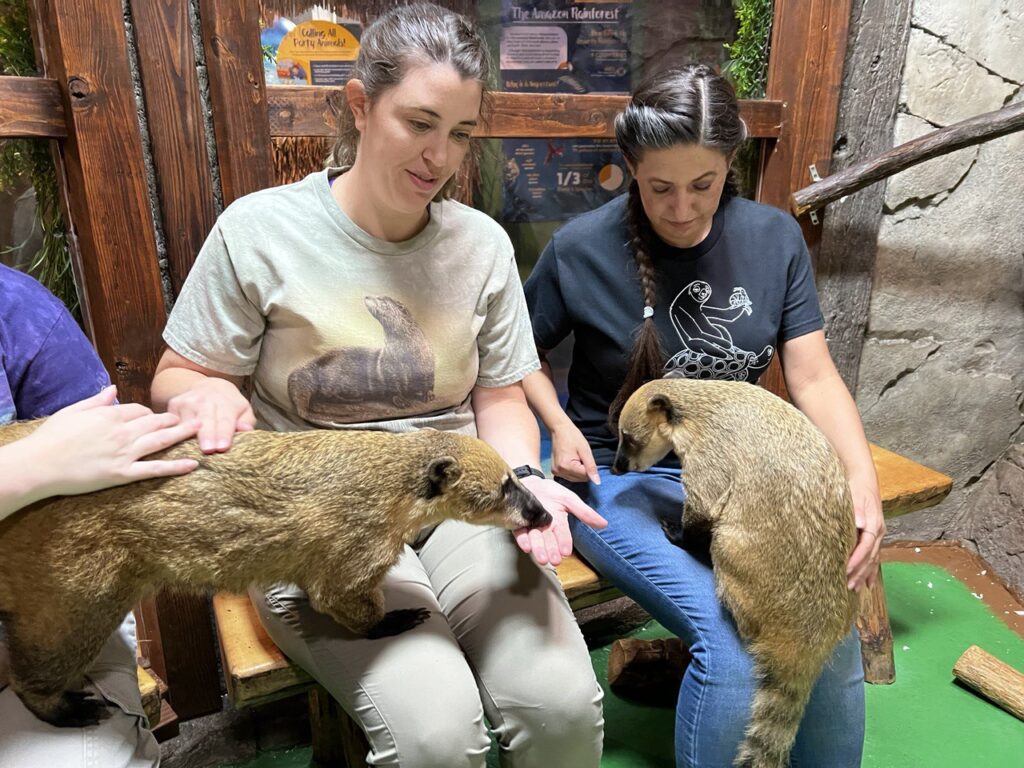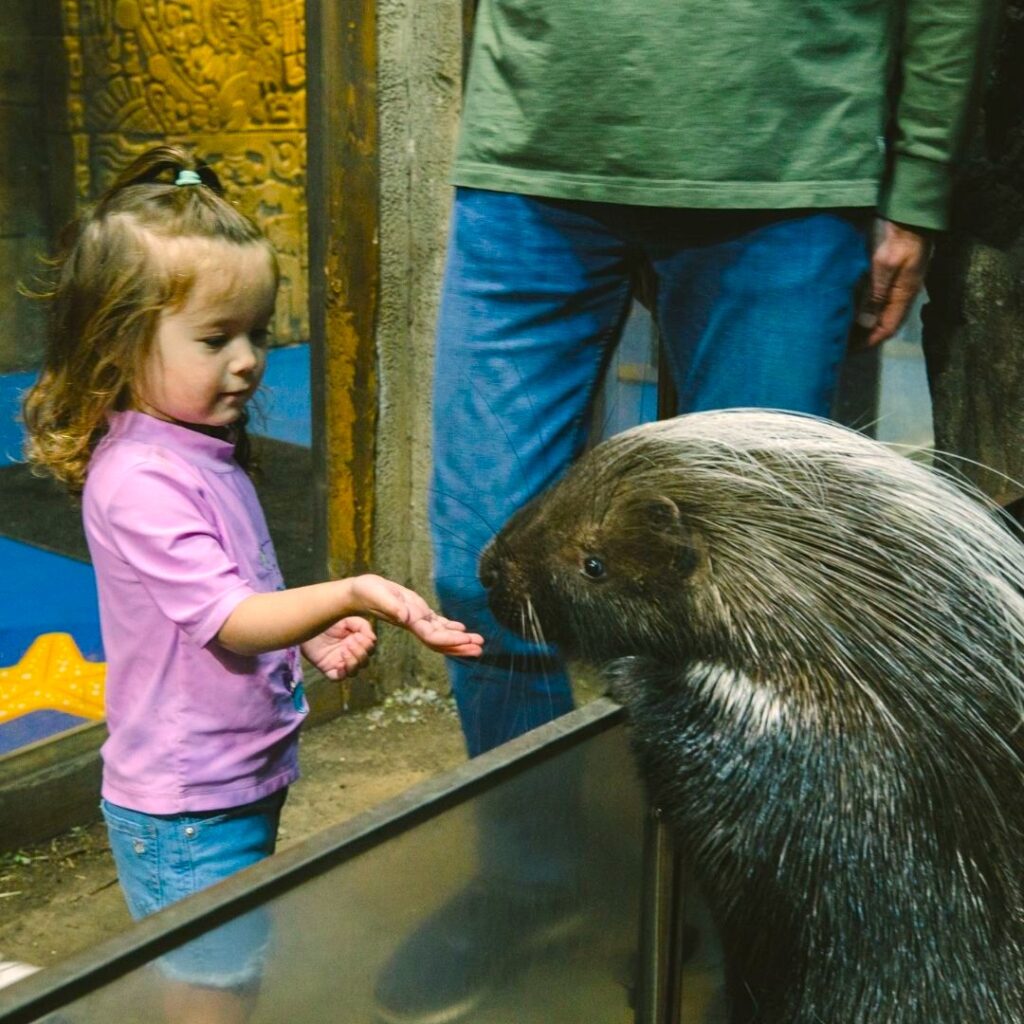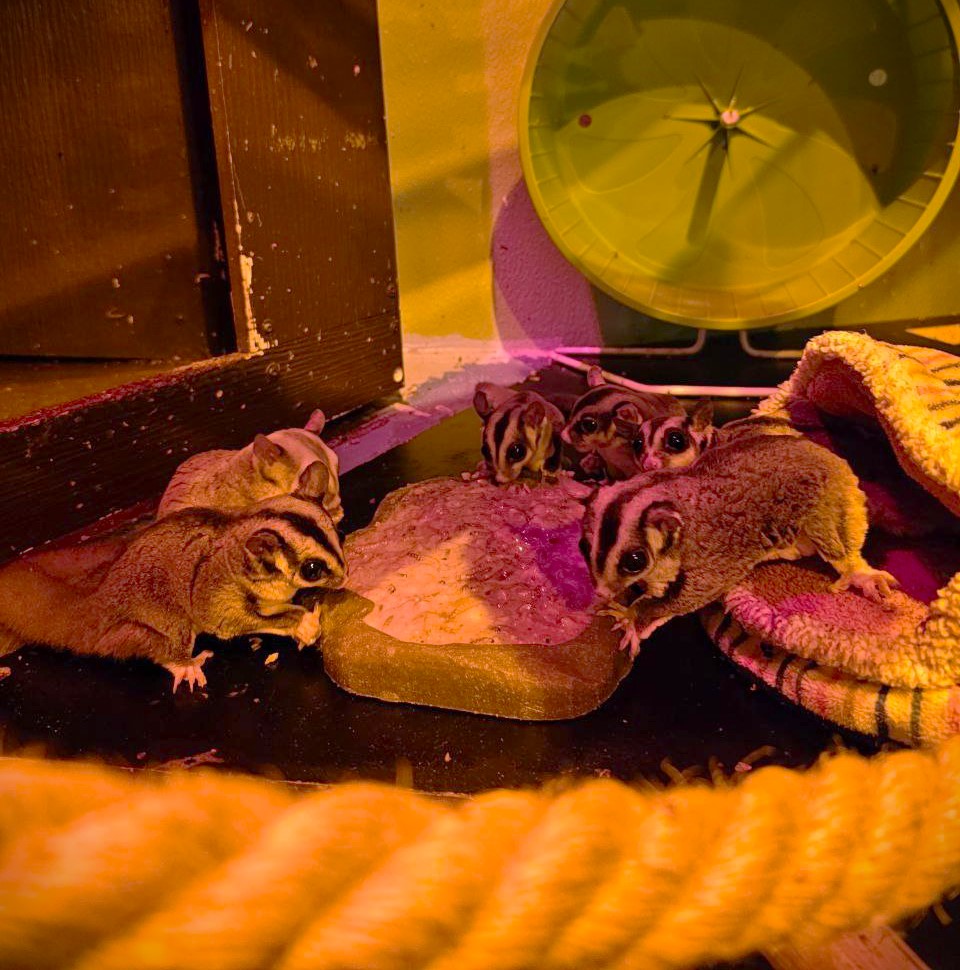SeaQuest’s Guide to Otters
Share it on:
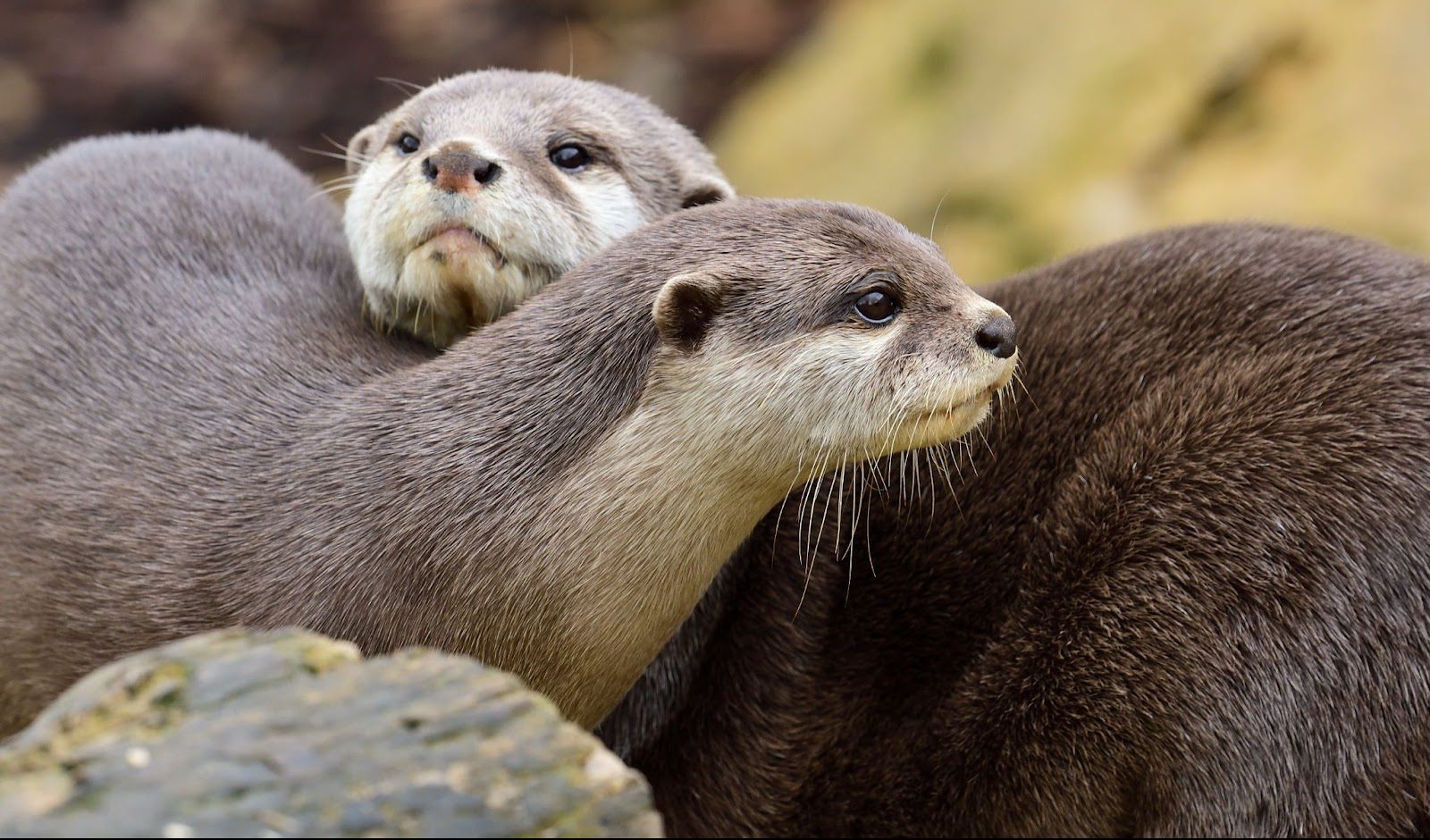
Otters are one of the most fascinating and charismatic marine mammal species. Charming, outgoing, and intelligent, here’s a comprehensive guide to otters and how you can learn more at SeaQuest about these fun and unique animal friends.
What is an Otter?
A carnivorous mammal, otters are part of the Mustelids family and in the Lutrinae subfamily. Considered a “cousin” of the weasel, otters are known for their elongated bodies, webbed feet, and playful antics, particularly their love of sliding down rocks, banks, or waterfalls.
Different Kinds of Otters
With 13 species around the world, you can find an otter species located on almost every continent! African Clawless otter, European otter, and Japanese river otter are just a few of the different types of otters, as well as many less-known species. Some otters are quite common and easy to see in the right places, but others are extremely rare and very difficult to spot in the wild.
Asian Small-Clawed Otter
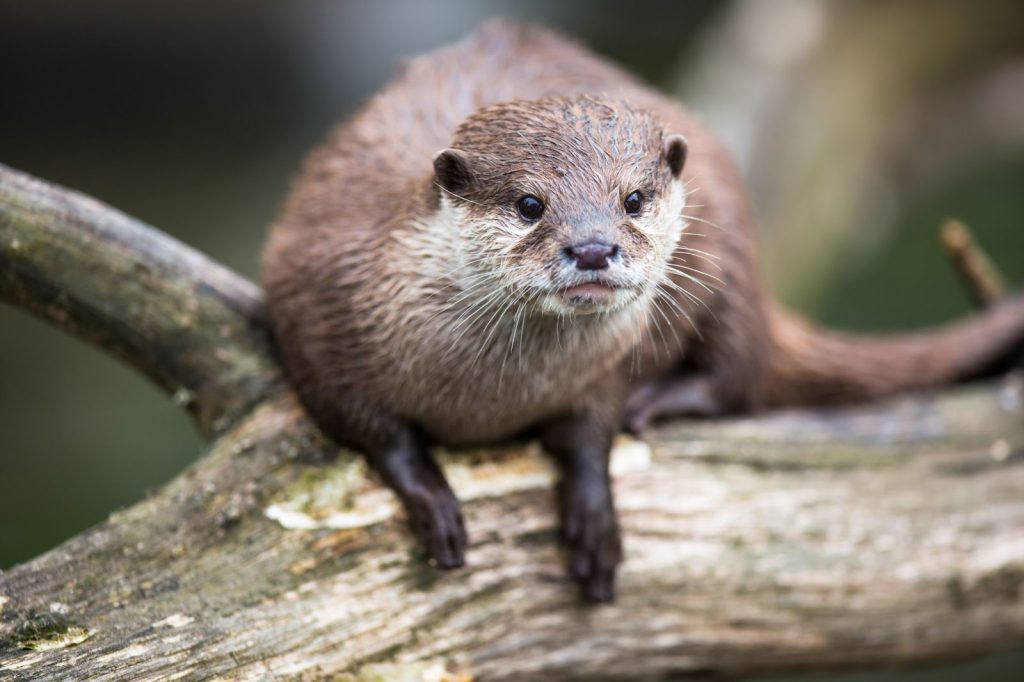
Asian Small small-clawed otters are the smallest species of otter. They average around 2 feet in length and weigh around 10 pounds. Their tails alone can grow to 24 inches! Asian Small Clawed Otters pair up for life and they usually produce two litters of young per year. Their bodies and short legs make them very agile swimmers as their hind legs propel them through the water. They are mainly active during the day, and they have excellent vision.
Asian Small Clawed Otters are very social animals and can be found playing along river banks as they dive in and out of the water.
Sea Otter
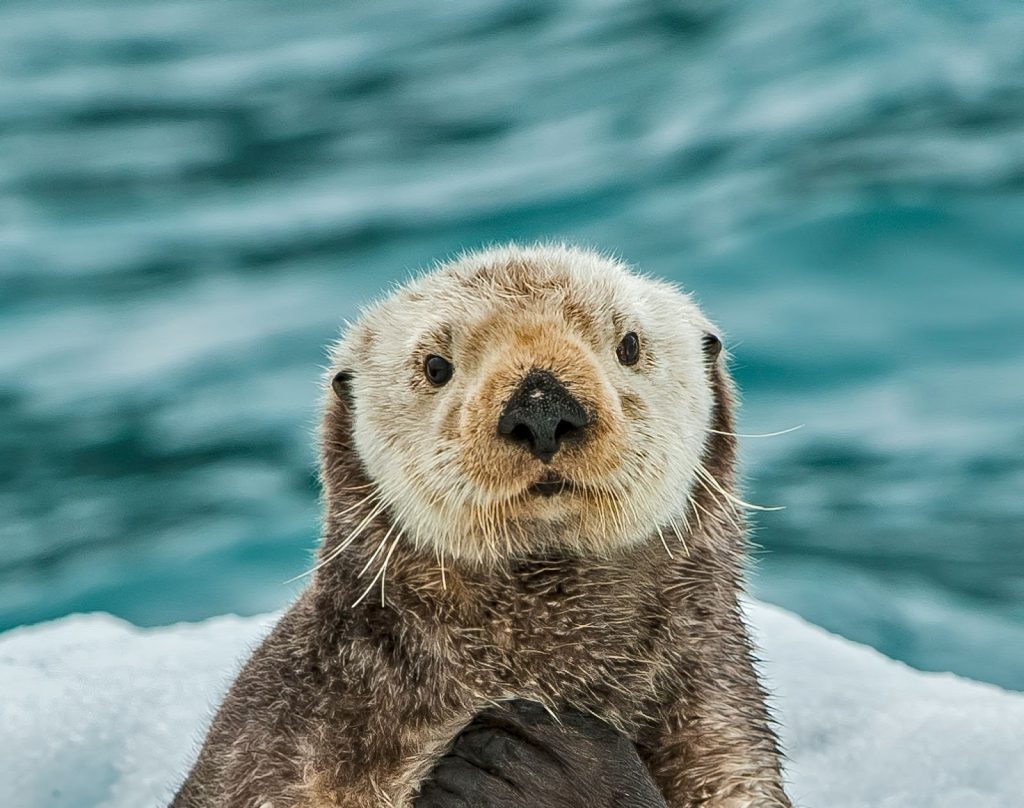
Sea Otters are a larger species of otter. They have a body length of about 3 to 4 feet and weigh between 40 to 60 pounds. They have dense, brown fur and strong front feet with retractable claws. Sea Otters have an excellent sense of smell and sharp eyesight.
When they sleep they often hold paws or attach themselves to kelp to prevent them from drifting away from their group. Sea Otters give birth to a single pup but on rare occasions, two pups. Females keep their pups dry by carrying them on her belly while she floats on her back.
Giant Otter
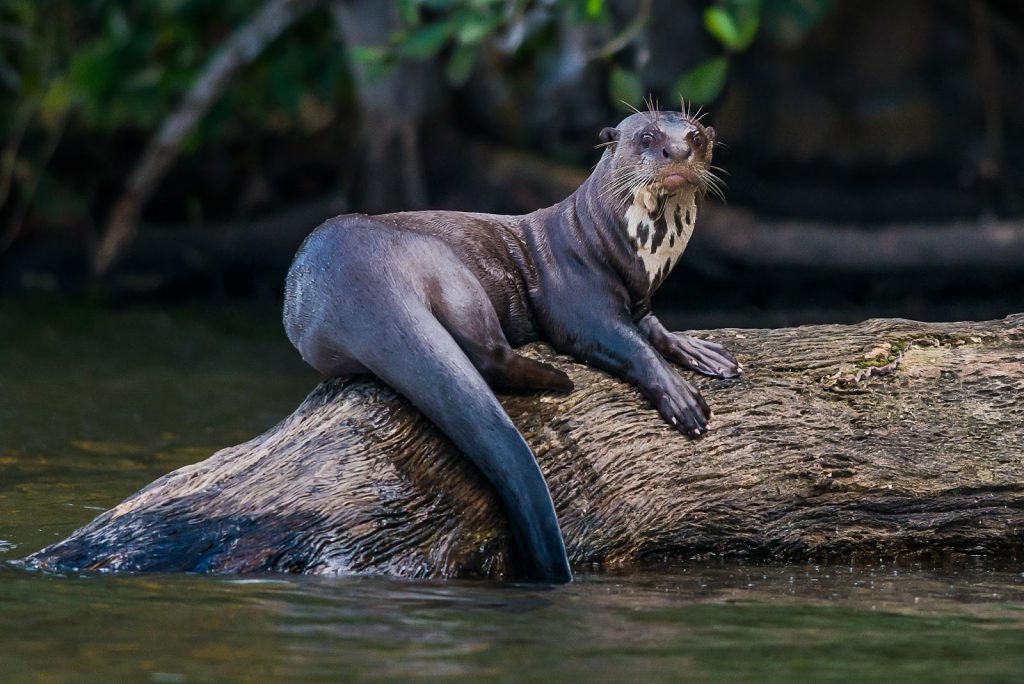
Giant Otters are the largest otter species and are very similar to large river otters. They can grow up to 4 feet and weigh up to 70 pounds. Giant Otters also have small ears that close when they go underwater and short legs with webbed toes and sharp claws. They have great eyesight and a flat wide-based tail which makes them suited for their aquatic river life.
North American River Otter
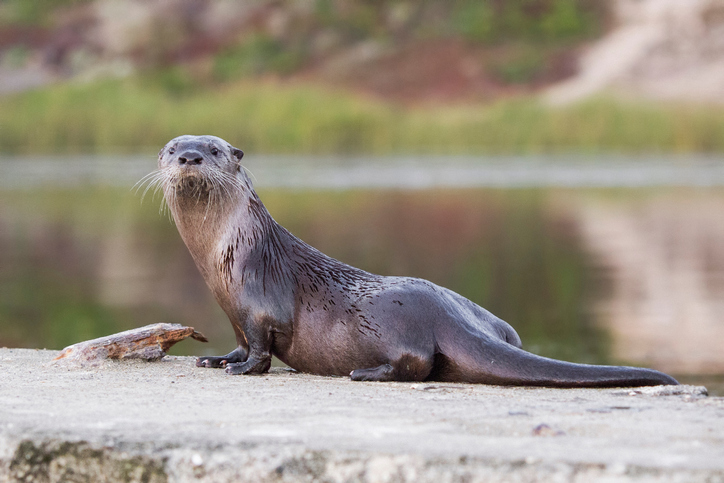
North American River Otters weigh between 10 pounds to 25 pounds and grow up to 3 feet in length. With their short limbs, long bodies, and broad flat tails, they are well adapted for their aquatic river life. River otters have been known to stay underwater for up to 8 minutes!
Where do Otters Live?
Asian Small-Clawed Otters live in the swamps and freshwater wetlands of Southeast Asia. They live in loose family groups of approximately 12 individuals and make burrows by digging into the muddy banks of their habitat.
Giant Otters are the largest otter and the rarest mammal in the Amazon region.
They are only found in the rainforests and rivers of South America and tend to live in family groups that consist of 4 – 10 members.
North American River otters live in the eastern regions of Canada, the northern United States, and along the east coast down to Florida. They prefer bog lakes with banked shores, and contrary to their name, River otters make homes in both fresh and saltwater habitats.
Sea Otters inhabit coastal areas in the North Pacific, particularly near marine kelp forests. They do most of their foraging within about half a mile of shore. Northern and southern sea otters once inhabited the Oregon coast, but today, southern sea otters live along the central coast of California. Northern sea otters live along the coasts of Washington, Canada, and Alaska.
What do Otters Eat?
Asian Small-Clawed Otters feed on frogs, crabs, crayfish, and shellfish. Unlike most other otter species, fish are not an important part of their diet.
Sea Otters feed on crabs, clams, mussels, sea urchins, and abalone. They forage on the sea bed for food, and they crack hard shells using rocks that they have collected from the bottom of the ocean.
North American River otters love to snack on small fish found close to shore banks, as well as amphibians such as frogs, and crustaceans such as crawdads.
Giant Otters are huge eaters! They consume around 10 lbs of food per day. They are purely carnivorous and eat a hefty diet of fish, crabs, small caimans, and small anacondas.
@visitseaquest Feeding time is tiring 🤣 #otters #ottersoftiktok #animals #asiansmallclawedotters ♬ someBODY WAKE UP – jonahpedro
How Long do Otters Live?
Sea Otters have an average lifespan of 15-20 years but in captivity, some live over 25 years. Giant Otters have a smaller lifespan in the wild at about 10 years. Asian Small-Clawed Otters will live around 12 years in captivity but lifespan in the wild is really unknown, with an estimated number of 5,000 left in the world. The North American River Otter has an average lifespan of 13 years in the wild, but up to 25 years in captivity.
Are Otters Endangered?
Otter endangered status varies by species and location. Habitat loss, water pollution, deforestation, and hunting threaten their survival. They are also captured for the exotic pet trade in some countries and several species are still trapped and killed for their fur.
Asian Small-Clawed Otters have a classification of “near threatened” while Sea and Giant Otters are listed as “endangered” as of today. The North American River otter is classified as “least concern” meaning they have safe population stability as of today.
Learn more about conservation efforts for the otter species, and particularly Asian Small-Clawed Otters, at SeaQuest today.
Otter Fun Facts!
- Asian Small-Clawed Otters are also known as Oriental Short-Clawed Otters.
- Though one of the largest otter species, Sea Otters are the smallest marine mammal!
- When Sea Otters sleep they often hold paws or attach themselves to kelp to prevent them from drifting away from their group.
- River otters sleep on land, unlike their Sea Otter friends.
- In the Brazilian river areas, Giant Otters are known as “Los Lobos del Rio” or Wolves of the River.
- Sea Otters can swim up to 5 miles per hour, while Giant river otters have been known to hit 9 miles per hour in their swim speed!
- Asian Small-Clawed Otter ears are small and round and have a unique valve-like structure that enables them to close when swimming underwater.
- There’s an urban legend that all otters hold hands while in the water. However, it’s only Sea Otters that actually hold hands and swim belly up with most of their body out of the water. River otters swim completely submerged.
Meet an Otter today!
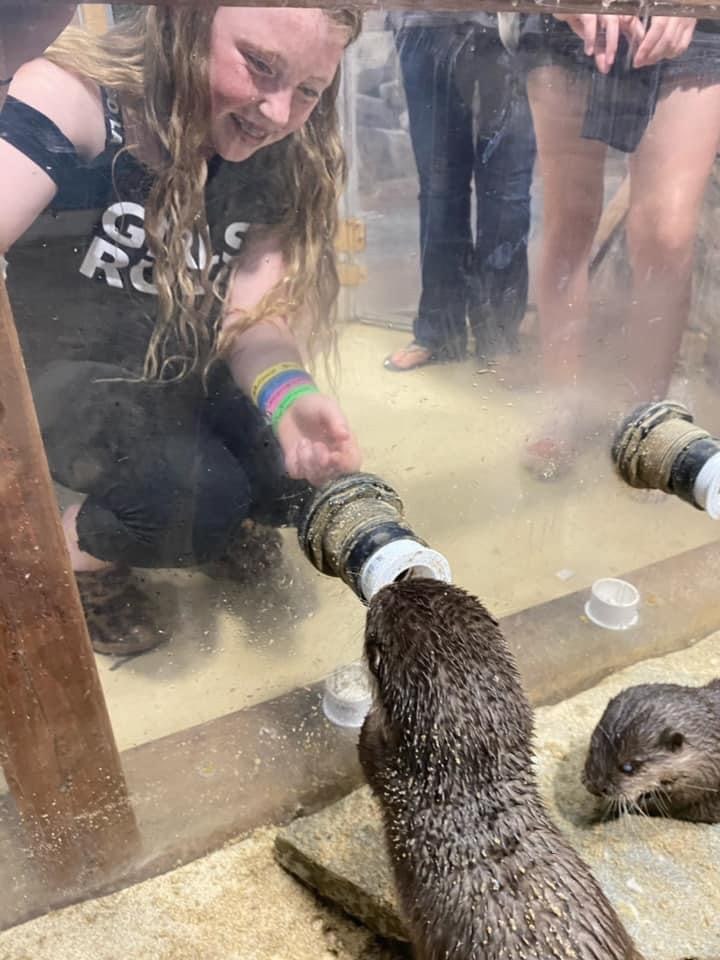
Do you play well with otters? Come meet our dynamic duo of Asian Small-Clawed Otters, Chip & Dale! In this exciting encounter, guests will meet and participate in an interactive feeding along with a short educational overview of the Asian Small Clawed Otter species and environment, and an opportunity to learn about SeaQuest’s conservation effort to protect the otter’s home habitat! Book your one-on-one interaction at one of these SeaQuest locations today: Las Vegas, California, Utah, Texas, Minnesota, Virginia, and New Jersey!


